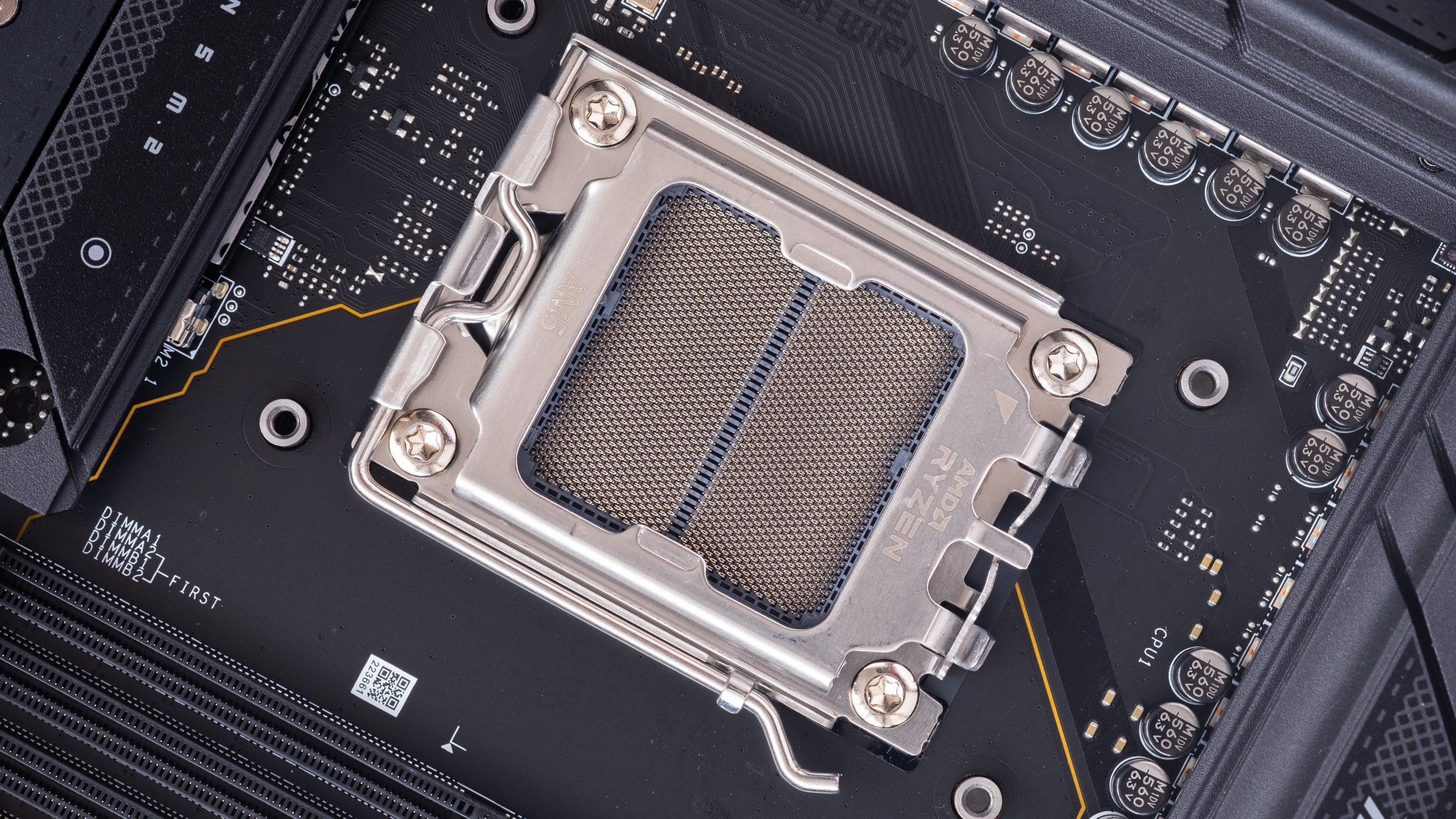
AMD's 6nm Rembrandt, 4nm Phoenix CPUs May Arrive On AM5
Ryzen 7000 (Raphael) processors have demonstrated to be some of the best CPUs on the market. At present, the only AMD chips to rest on the AM5 socket. However, that could change very soon. According to a table (opens in new tab) from the Gigabyte hack last year, (which we recommend you throw a bit of salt over), AMD’s Rembrandt and Phoenix APUs could transition from mobile to desktop, giving the AM5 socket two new tenants.
The leaked information reportedly points to three types of Ryzen processors that employ the AM5 socket. They all belong to the processor Family 19h, constituted by AMD’s Zen 3, Zen 3+ and Zen 4 chips. We know that Type 2 (Models 60h-6Fh) refers to the Ryzen 7000 lineup because the Zen 4-based chips sport the “A60F12” CPU ID. The specifications for Type 2, such as the 28 PCIe lanes, quickly gave it away.
The Type 1 (Models 40h-4Fh) and Type 3 (Models 70h-7Fh) processors are currently unreleased. We believe that Type 1 may be the Ryzen 6000 series (Rembrandt), whereas Type 3 may be the Ryzen 7040 series (Phoenix), mobile APUs that AMD has already announced. The CPU ID for Rembrandt is “A40F41”; Phoenix should be “A70F71.” Phoenix targets ultra-thing laptops and is supposed to hit the retail market; however, we haven’t seen the chips in a public database to corroborate the CPU ID.
Rembrandt comes with Zen 3+ cores and RDNA 2 graphics. TSMC manufactures Rembrandt for AMD on the foundry’s 6nm node. Phoenix, on the other hand, is the more exciting prospect. Phoenix, which features TSMC’s 4nm node, pairs AMD’s latest Zen 4 cores and RDNA 3 graphics. The chips also sport the XDNA technology, an FPGA-based AI engine that AMD acquired when it purchased Xilinx. AMD’s previous desktop APUs, such as the Ryzen 7 5700G, stuck to an octa-core configuration. Mobile Rembrandt and Phoenix max out at eight cores and 16 threads, so the recipe fits AMD’s desktop APUs.
Socket AM5 Processor
| Processor Features | Type 1 | Type 2 | Type 3 |
|---|---|---|---|
| Family/Model Numbers | Family 19h, Models 40h-4Fh | Family 19h, Models 60h-4Fh | Family 19h, Models 70h-4Fh |
| On-chip Graphics | 1 Dedicated, 3 Type-C (Hybrid GFX support) | 1 Dedicated, 3 Type-C (Hybrid GFX support) | 1 Dedicated, 3 Type-C (Hybrid GFX support) |
| Memory | Two DDR5 Channels: DDR5 UDIMMs One or Two per channel, up to Four Total or DDR5 SO-DIMMs One per channel, up to Two Total | Two DDR5 Channels: DDR5 UDIMMs One or Two per channel, up to Four Total or DDR5 SO-DIMMs One per channel, up to Two Total | Two DDR5 Channels: DDR5 UDIMMs One or Two per channel, up to Four Total or DDR5 SO-DIMMs One per channel, up to Two Total |
| Error Checking/Correcting Code (ECC) | OPN specific | OPN specific | OPN specific |
| SVI Interface | V 3.0 x3 | V 3.0 x3 | V 3.0 x3 |
| SVI Voltage Planes: VDDCR, VDDCR_SOC, VDD MISC | CPU and GFX share VDDCR rail | CPU and GFX share VDDCR rail | CPU and GFX share VDDCR rail |
| PCIe | PCIE_x20 | PCIE_x28 | PCIE_x20 |
| USB Ports | Model 40h: 3 USB 3.2 (Type-C), Model 44h: 2 USB4 and 1 USB 3.2 (Type-C); 1 USB 3.2 (Type-A), 1 USB 2.0 (Secure BIO) | 3 USB 3.2 (Type-C), 1 USB 3.2 (Type-A), 1 USB 2.0 (Secure BIO) | 2 USB4 and 1 USB 3.2 (Type-C), 1 USB 3.2 (Type-A), 1 USB 2.0 (Secure BIO)” |
| SPl/eSPI | 2 ports SPI/eSPI | 2 ports SPI/eSPI | 2 ports SPI/eSPI |
Like Raphael, Rembrandt and Phoenix arrive with DDR5 memory support, up to two memory modules per channel. Consumers have been asking for a modern-day APU that can exploit DDR5 for some time now. AMD APU’s craze for high-speed memory is well documented, so seeing how much they can benefit from speedy DDR5 memory will be interesting.
There will be some features that consumers will miss with Rembrandt and Phoenix, though, such as PCIe 5.0 connectivity. Rembrandt and Phoenix only support PCIe 4.0, so they will not be available to take advantage of PCIe 5.0 SSDs on the desktop. Expansion and connectivity are slightly limited as well. While Raphael delivers 28 PCIe lanes, Rembrandt and Phoenix only offer 20, 29% fewer lanes.
The connectivity options obviously vary among the three different Ryzen processor families. According to the leaked table, one Rembrandt variant (Model 40h) supplies three USB 3.2 Type-C ports, while the other variant (Model 44h) delivers two USB 4 ports and one USB 3.2 Type-C port. In addition, Phoenix reportedly arrives with two USB 4 ports and one USB 3.2 Typ-C port.
Admittedly, AMD hasn’t given APUs the love they’re entitled to over the last couple of generations. APUs stagnated around the Zen 3 period. The last APU that AMD launched was the Ryzen 5000G (Cezanne) series in 2021. Unfortunately, the poor 7nm Zen 3 chips were still on the hoary Vega graphics engine. So AMD’s APUs are in line for a well-deserved upgrade, and hopefully Phoenix can provide it.

